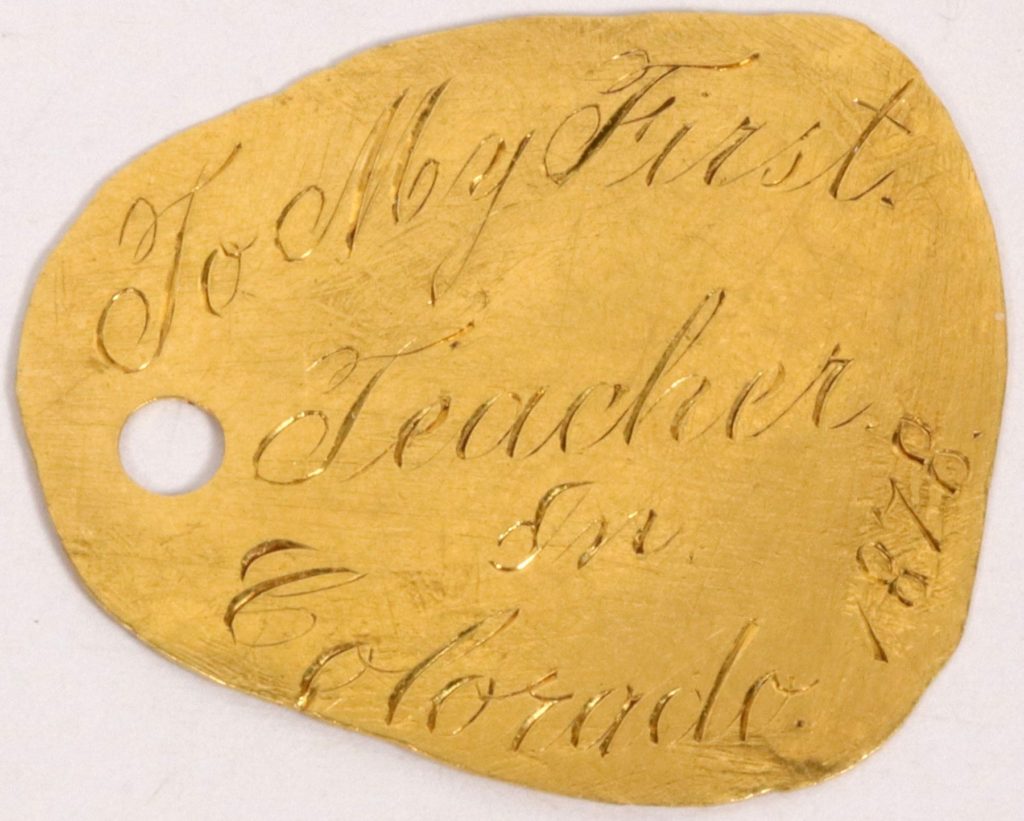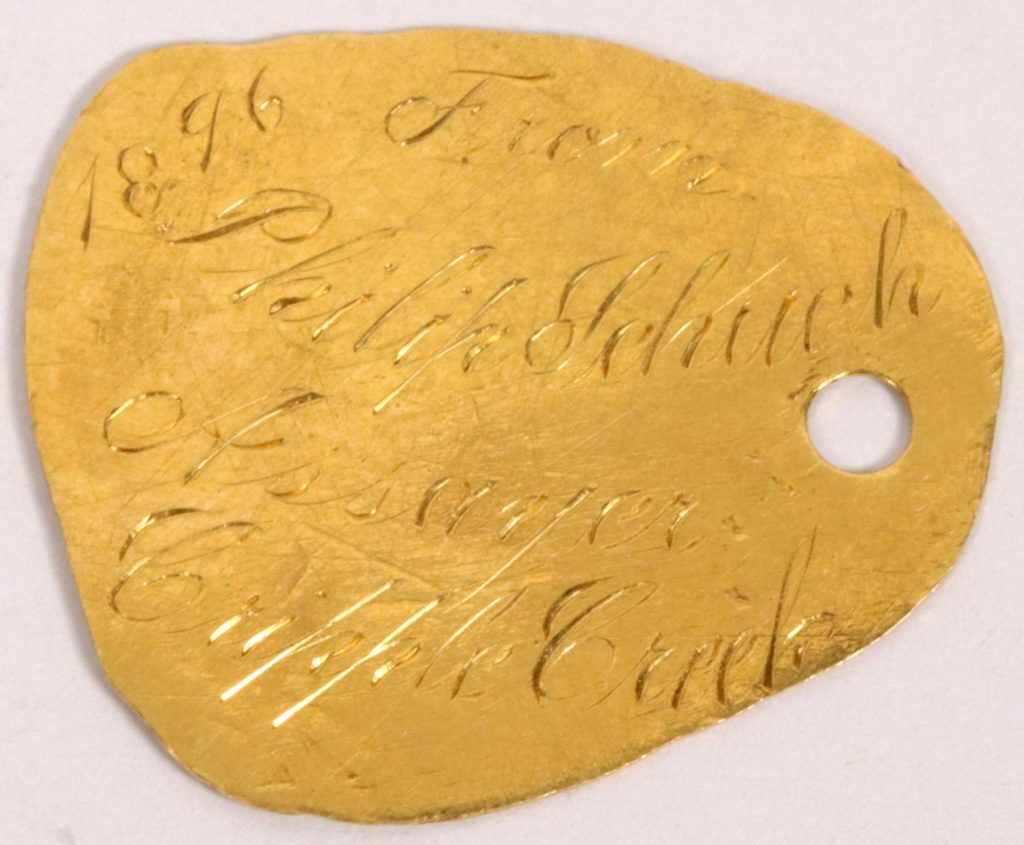0.1 oz Philip Schuch Jr Assayer Gold Presentation Ingot


Gold Presentation Medallion, Cripple Creek, 1896
FNH
Choice gold presentation medallion “To my first/ teacher/ in/ Colorado/ 1878// 1896/ From/ Philip Schuch/ Assayer/ Cripple Creek”. 0.1 troy ounces gold, 23 x 27mm. This is a handmade, possibly rolled and hammered, crude gold piece probably made by Schuch’s in his assay lab.
Introduction
Cripple Creek was one of the greatest gold discoveries in American history. Minor occurrences of placer gold were discovered in the stream beds on the ranch owned by Robert Womack, who had been actively prospecting the entire area from about 1880-1890. He worked a small claim in “Poverty Gulch” by himself, with so little gold found that no one paid him any attention. It was no wonder, since it was ranchland with cattle, and cowboys were after the beef, and didn’t know enough about gold to bother with it. One day, perhaps in the late 1880s, he found native gold in a chunk of rock. A couple of other prospectors showed up in 1890 and found some gold (De la Vergne and Frisbee). By the time they came back in February of 1891, they found Womack had sunk a shaft about 45 feet on a claim he had staked in 1885. Within two short years, all hell broke loose. Since then, Cripple Creek has produced well over 15 million ounces of gold, and today boasts Colorado’s largest open pit gold mine. (Hills, Official Manual of the Cripple Creek District, 1900, pp15-16)
Few solid gold artifacts remain from the Cripple Creek days of the 1890s. Certainly the best known is a gold ingot that belonged to William Stratton, owner of the famous Portland mine, which is on display in the Pioneer Museum in Colorado Springs today. This piece may be the sole gold piece from that era in private hands today.
Early Assayers of Cripple Creek
With gold discoveries at Cripple Creek taking off in 1891, the need for a local assayer became important. Stratton was using assayer Burlingame & Co. of Denver in October, 1891 (EE and WE Burlingame.) The Colorado Springs newspaper (Weekly Gazette) reported an assayer in Cripple Creek in June of 1892, but did not name him. By September 1892, “Mr. Nichols” had set up an assay office. Many more would follow. By 1898, mines were pouring out gold, and most mines had their own assayers. The Denver Branch Mint was in full swing that year, with chief assayer L. Hodges noting in December that the Mint would buy $20 million in gold that year, an increase of $8 million over 1897. With the Branch Mint buying so much gold, the need for the private assay office was dwindling, though still exceptionally useful for the prospectors.
In 1895, Philip Schuch Jr. had his own assay office in Cripple Creek. Schuch had worked for several mining companies as assayer in Leadville and Aspen. His office was one block north of the Florence and Cripple Creek Railroad, which had been laid in 1893. Schuch soon became known as one of Cripple Creek’s dominant assayers. In 1900 he caused to be built a new mill using the cyanide process, a relatively new idea at the time that allowed for economic extraction of gold from low grade oxidized ores. By 1902, he was actively involved in several mining companies, especially the Triumph Mining Company on Bull Mountain, which was unrelated to the Triumph on Battle Mountain.
Still on the hot market idea of cyanide mills, Schuch erected a cyanide mill at Summitville in 1903 near Del Norte in Rio Grande County. Known as the “Reynolds Mill”, it was another breakthrough mill made for economically processing low grade gold oxidized ores. Schuch had purchased 174 acres of patented mining claims from a Colorado Senator. Whether the mill was ever in production is worthy of further research.
By 1894, Schuch was back in Denver for good, residing at the famous Brown Hotel, listed as a chemist in the local Directory. In 1906 he held the position of Chemist with the Radio Sulpha Company, and by this time had married and had a daughter, which may have explained why his days in remote Colorado mining camps had come to an end.
This gold medallion is an excellent representative piece of mining and assaying in early Cripple Creek. It is from one of the very early Cripple Creek assayers, and one of the few independent assay offices of the early 1890s period.
[06/2023] https://www.icollector.com/Philip-Schuch-Jr-Assayer-Gold-Presentation-Ingot-168017_i49117384 ($2,750)
